
Inspirations
Explore the elevated life in the mountains. This content debuted in 2015 with Alpine Modern’s printed quarterly magazine project.
Summer Graze
Can you hear the sound of moo-sic? During summer, the von Trapp family grazes cows and other farm animals on their nordic ski slopes in Vermont for sustainable land management
Decades ago, Maria and Captain Georg von Trapp inspired the musical The Sound of Music. Now settled in northern Vermont, the family’s younger generations practice sustainable land management that ski resorts around the world have been experimenting with for decades: Cows, sheep, goats, and other grazers savor their summer meals on winter-sports land.
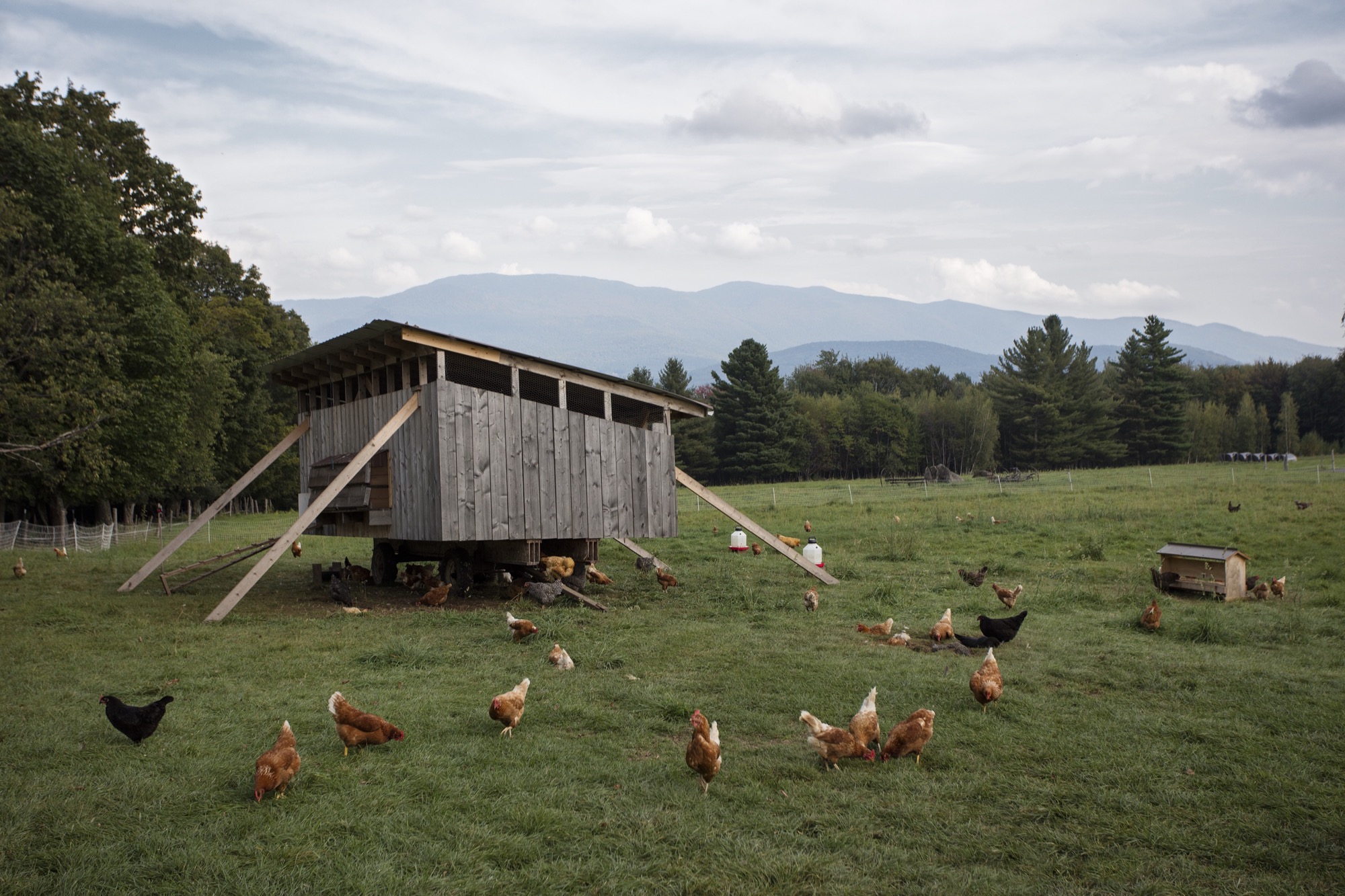
It’s an overcast afternoon at the Trapp Family Lodge in northern Vermont, and out in the Wedding Meadow, 150 chickens are taking in the views of Worcester Range spread out behind the bright-white event tents. Twenty-one sheep are enjoying a snack in front of the Austrian-style villas, half a dozen pigs are patrolling Luce Trail, and over by the practice meadow, sixty-five Scottish Highland cows with shaggy bangs and gentle eyes are trotting for cover as the sky cracks open into a midsummer storm.
Balance of system
Appearances to the contrary, this is not an alpine sequel to Animal Farm in which barnyard creatures seize the ski industry. Rather, the scene depicts new developments in an approach to sustainable land management that ski resorts around the world have been experimenting with for decades. The idea is to combine agriculture and recreation in a way that benefits farmers, resort operators, and tourists alike. When animals graze on ski slopes, fewer resources go into mowing, summer visitors get a brush with rustic mountain life, and cows, sheep, and other animals get access to the alpine plants that produce some of the tastiest cheese and meat imaginable.
“They benefit, we benefit,” says Patrick Bliss, the tanned and goateed Vermont native who has served as property manager at the Trapp Family Lodge for seven years and head turkey-herder, pig procurer, and chicken caretaker for two.
“They benefit, we benefit.”
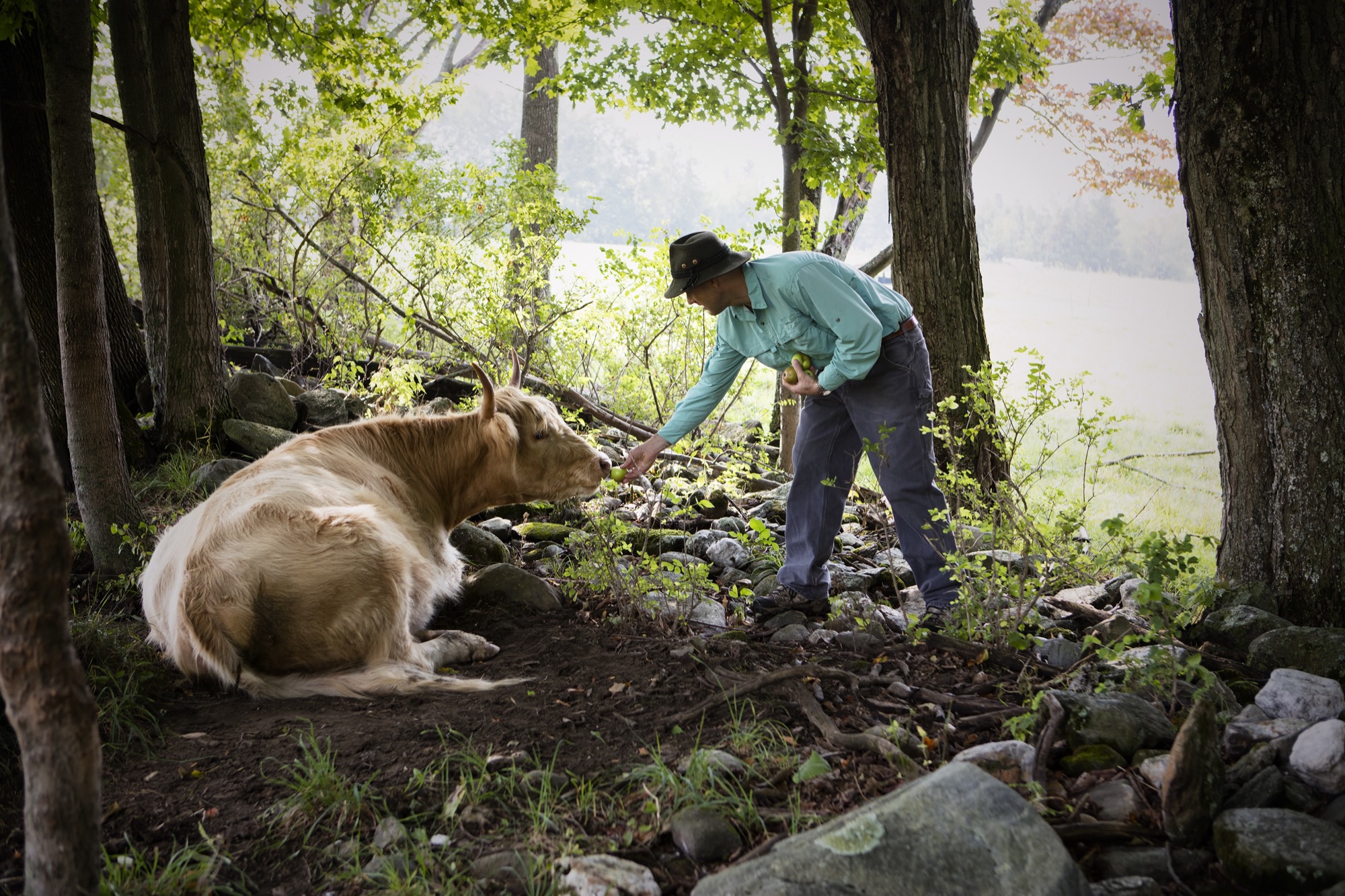
The Sound of music—where are they now?
The 2,500-acre (ca. 1,012-hectare) resort he tends is drawing attention for its innovative use of animals, but it also happens to be one of the most storied ski lodges in North America. Johannes von Trapp, who today runs the resort with his son Sam, daughter Kristina, and son-in-law Walter Frame, is the son of Maria and Captain Georg von Trapp, the real-life couple who inspired The Sound of Music. Most musical fans know that the family of singers fled Europe to escape Nazi persecution in the 1930s; fewer realize they made their new home on a verdant mountainside in Stowe, Vermont, and later opened an Austrian-style ski resort there.
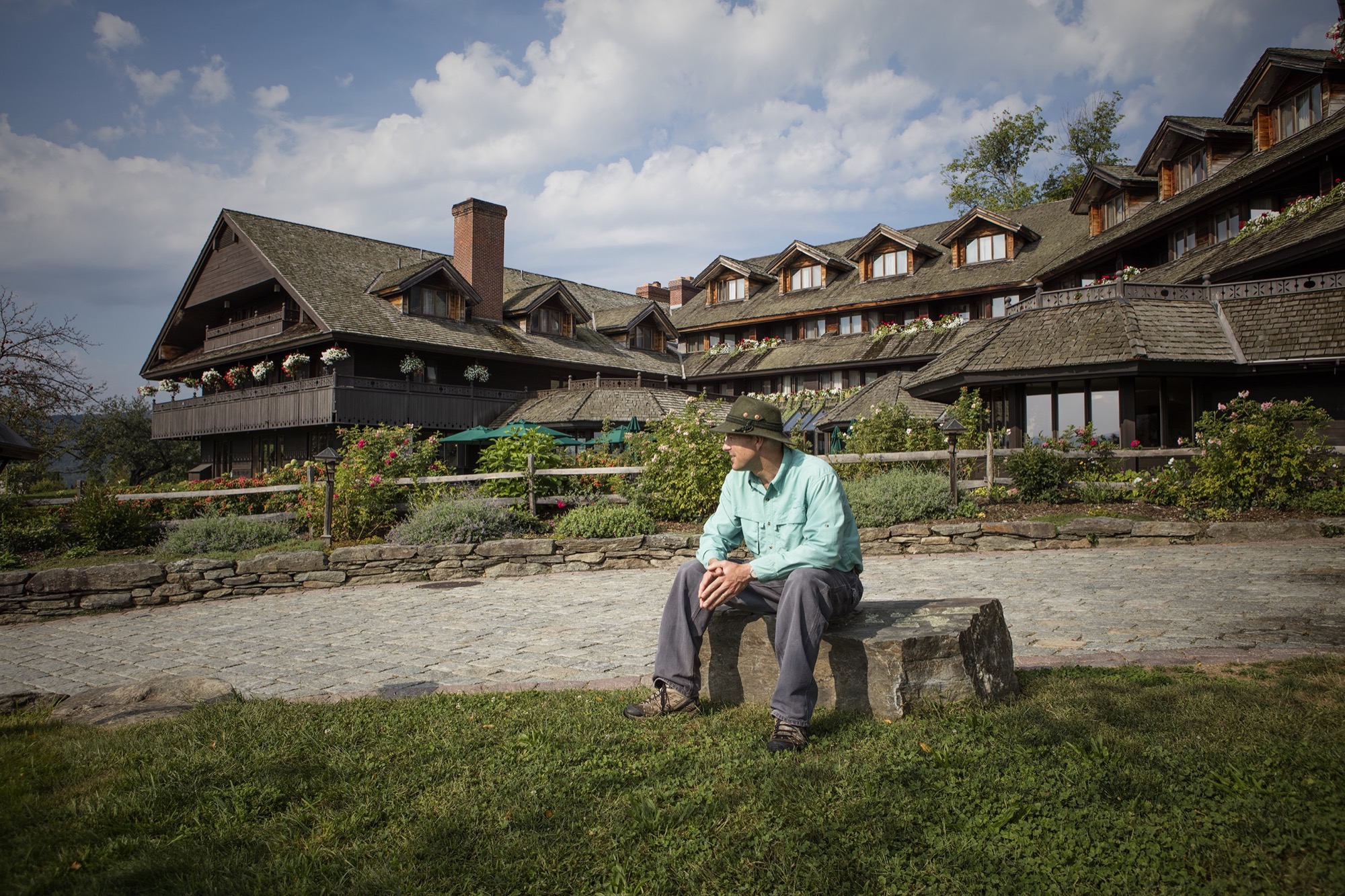
For years, Johannes kept cattle on the land as a hobby, but in 2013 the family took a cue from their state’s thriving farm-to-table movement and decided to experiment with pigs, chickens, turkeys, and sheep as well. Today, meat and eggs from the grass-fed animals go into bratwurst, sauerbraten, and other special dishes served in the dining room, much to the delight of guests. The family hopes to expand its herds in coming years, Bliss says.
Long-standing practice in the European Alps
Though the project has few parallels in the U.S., it would hardly raise an eyebrow in the European Alps where the von Trapp family once lived.
“Most of the ski areas in Europe were predated by other uses of the forest, in many cases farming,” says Michael Berry, president of the National Ski Areas Association, which represents 350 U.S. ski area owners and operators.
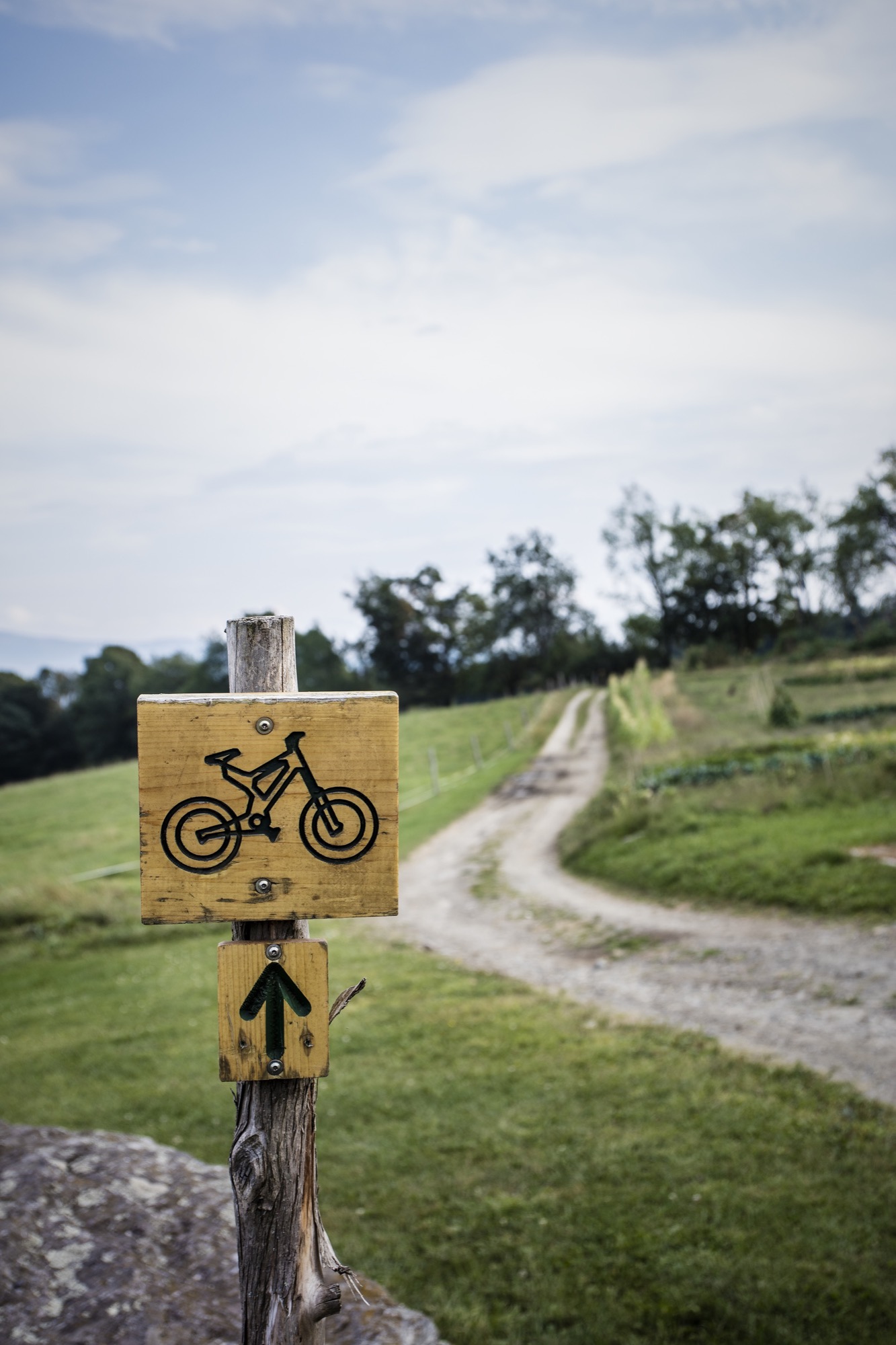
Mountain farmers raised small herds of dairy cows or goats (think Heidi) and transformed their milk into alpine cheeses like Gruyère and fontina. As skiing became increasingly popular throughout the twentieth century, however, resorts displaced some of these farms and damaged the fragile mountain ecosystems surrounding them. Road and slope construction caused erosion, artificial snow froze spring growth, and development brought its usual cascade of concrete and cars to quiet mountain villages.
But in other cases, farmers worked out a fruitful coexistence with their new neighbors. They leased pastures to ski operators in winter, or even became part owners of resorts themselves. The income from these arrangements gave them a way to maintain their traditional farms. “It’s a fascinating balance of two realities,” says Berry.
“It’s a fascinating balance of two realities.”
One place where this model thrives is the Swiss ski resort of Gstaad. The tony alpine village is home to dozens of celebrities (including Julie Andrews, of The Sound of Music fame), but also to 7,000 Simmentaler cows, who saunter past the designer boutiques each summer with bells on their necks and crowns of flowers on their heads, bound for ski slope pastures. Farmers boil their milk in copper kettles to make Berner Hobelkäse, a hard slicing cheese.
Importing an idea
The balance between agriculture and alpine recreation has proven trickier in North America, with its very different history and ecology. “Not to say their interests are mutually exclusive, but although the ski areas create pastureland, generally the compatibility of the two activities is not seen as beneficial,” says Berry.
One problem is that permits for grazing typically do not overlap with permits for ski use, especially in western states where resorts often operate on Forest Service land. The two types of permits come with different rules for water quality, erosion, and other environmental impacts. The recent boom in summer recreation at ski resorts (the result of new legislation allowing more off-season use) poses another challenge.
Whether the reason lies in these obstacles, or simply in the added complications that animals entail, grazing hasn’t taken hold in a big way on slopes outside of Europe. Big Rock Ski Area in Maine, Killington Resort in Vermont, and The Canyons, in Utah, all launched and then discontinued programs. In Japan, Australian snowboard-photographer-turned-farmer Rob Alexander grazed goats on a ski slope in Nagano, attracting copious media attention, but shut down the business in 2014.
One program that hasn’t fizzled out is at Vancouver’s Sun Peaks Ski Resort, which since its founding in 1962 has shared 4,000 alpine acres with local ranchers. Today 400 beef cattle graze all the alpine bowls up to the summit, says slopes manager Seth Worthen. Keeping them out of the village requires six miles of electric fencing, but Worthen says the effort of installing it each year is worthwhile. “It keeps the grass mowed down and the brush from encroaching onto the ski runs,” he says. That cuts diesel and gas use by about a quarter.
Bliss hopes to soon reap similar savings on the Trapp Family Lodge’s backcountry slopes. So far, the animals have stayed on the lower-elevation cross-country courses, but two years ago his team cleared twenty acres of steep forested land for more adventurous skiers. Keeping them sapling-free requires “hand-to-hand combat” by a team of five chain-saw-wielding men, Bliss says, since the tree stumps rule out tractor use. Sheep, on the other hand, “will pick a stump clean.”
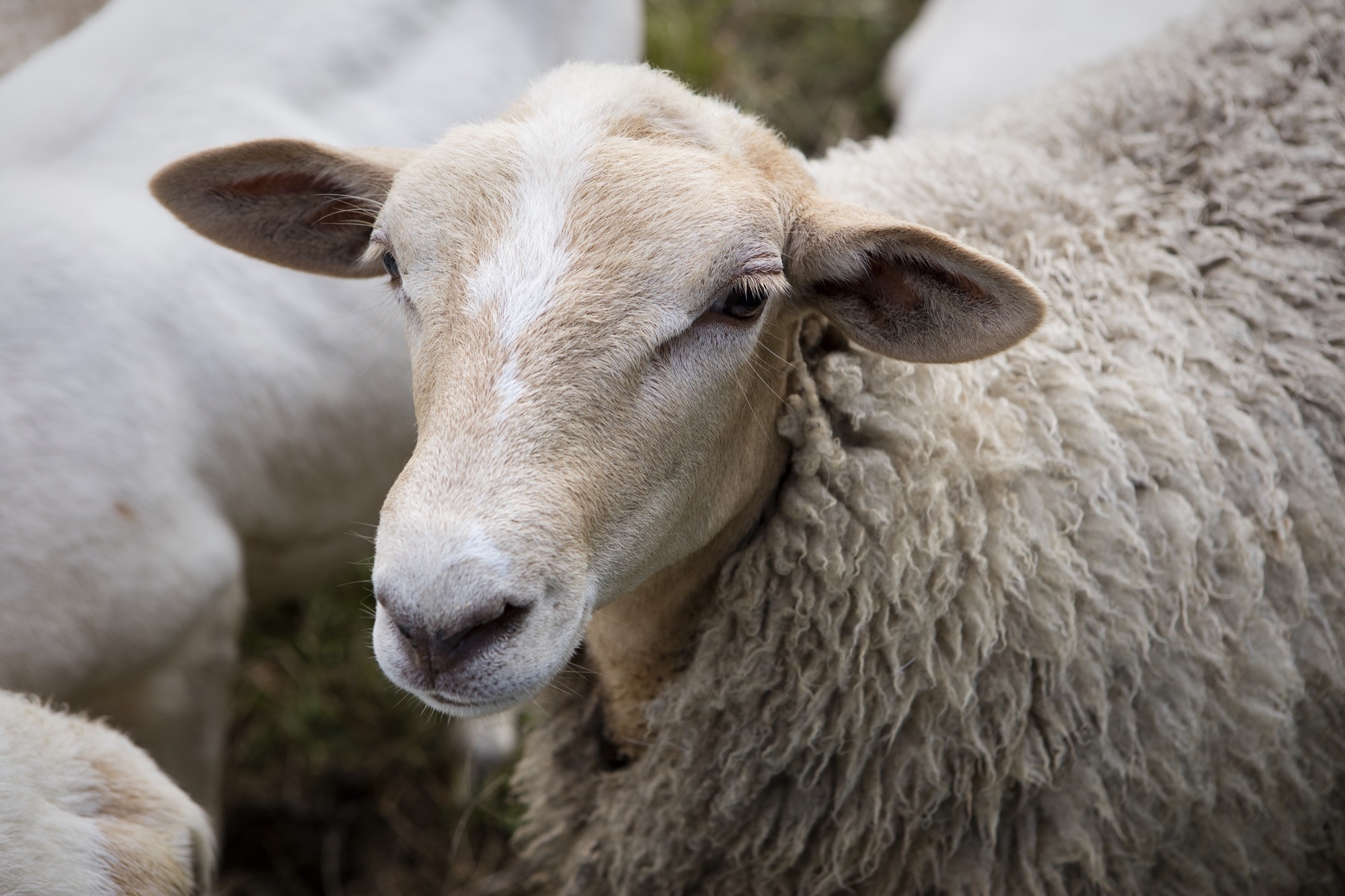
To that end, Sam von Trapp is raising a flock of Katahdin sheep that he hopes to move onto the land next year. Originally bred to clear brush under power lines, the sheep are famously un-picky eaters, turn foliage into protein with great efficiency, and require little care aside from guarding against predators.
The project promises to add yet another layer to an already complex system. For Bliss, managing that system has been challenging but hugely rewarding. “It’s not just about farm-to-table, but how to fit it into the resort setting, which is tricky,” he says. “We’re under a microscope, but at the end of the day, that’s the best for the animals.” If the system proves equally beneficial for the owners of those animals, other ski area operators in the United States just may start to take notice. △
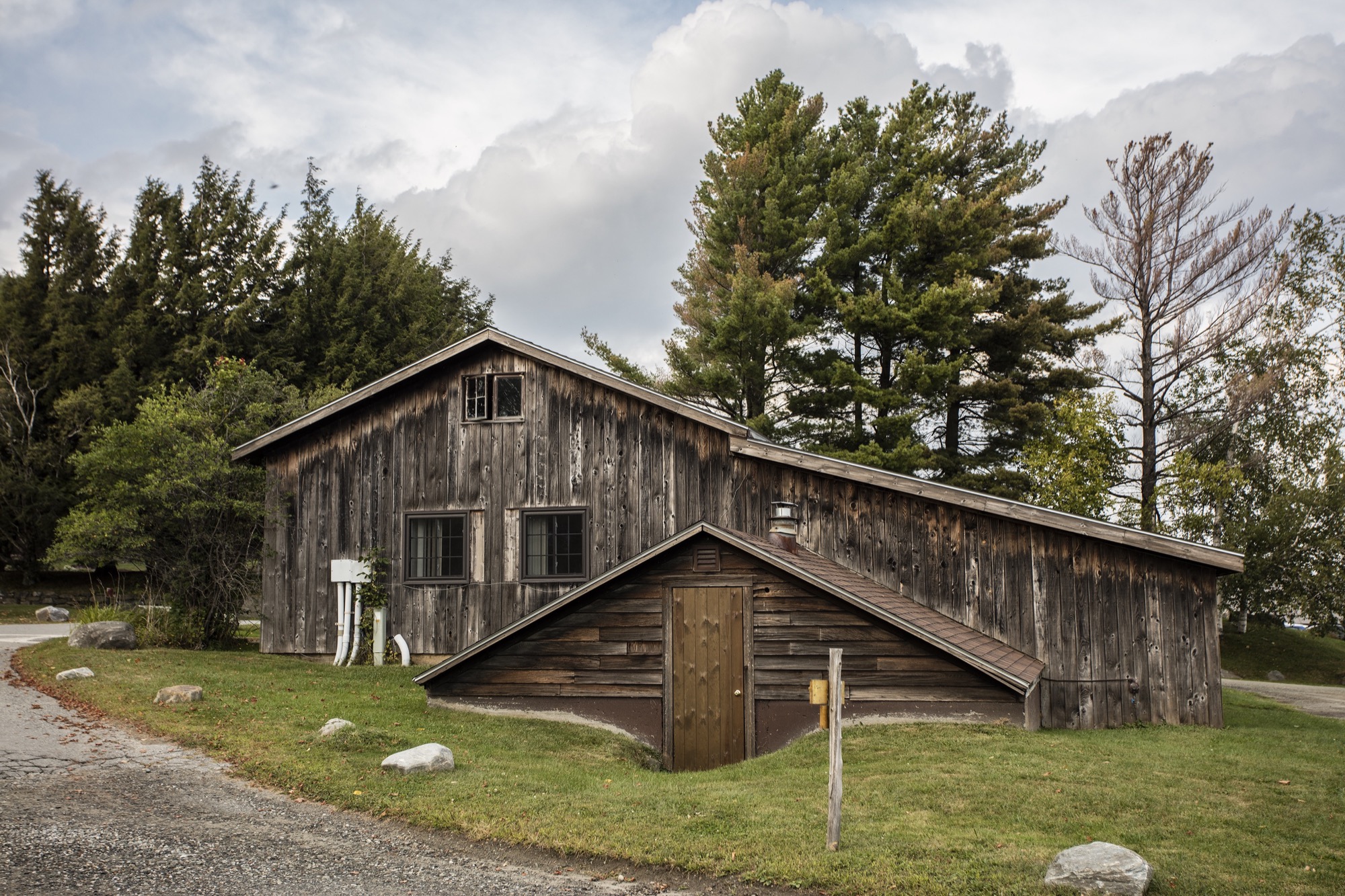
Architecture Improv
An Interview with David Sellers, the “Father of the Design-Build Movement”
A visit with experimental architect and designer David Sellers reveals his then-radical ideas of creating a home in the 1960s. Earning the moniker “Father of the Design-Build Movement,” he established the antiestablishment commune Prickly Mountain on 450 acres (182 hectares) of farmland in Vermont.

“We really didn’t know what we were doing when we got here,” says David Sellers, describing those first days in the Mad River Valley of Vermont, when he was experimenting not only with a radical idea of what makes a home but also an entirely novel approach to the practice of design and building.
Breaking ground in the sixties
It was the early sixties, a period when art and science turned experimental and people were driven by a desire to break with the norm. Sellers and his business partner, Bill Reineke, landed in the mountains of Warren, Vermont, smack-dab in the middle of the decade and smack-dab in the middle of nowhere. The freshly minted Yale architecture graduates each had a thousand dollars in their pockets and a dream to start something completely new. They purchased 450 acres (182 hectares) of cheap land—fallow fields of blueberry bush—and convinced some students to camp out with them for a summer. They dreamed of reinvigorating the architecture discipline.
They built a series of houses, all with funny names—the Tack House, the Pyramid House, the Bridge House—and developed a community called Prickly Mountain. The goal was “to create buildings where design was the driving force in construction,” explains Sellers. Their process was described as “design-build”—instead of building to preexisting designs and plans, they designed as they built. “We wanted to make something special in our time, the twentieth century, with the materials and tools available,” says Sellers. “The chief aim was participation, learning as you go.“ It was a community of exploration and collaboration.
“The chief aim was participation, learning as you go.”

Sellers’s design-build process was organic in nature, much more like sculpturing. The unique, interactive structures were unlike anything else built at the time: Circular ladders sliced through the interior of buildings to create landings for sleeping nooks or to capture the morning sunlight; elevated walking bridges connected structures on land that was once considered unbuildable; and climbing pegs were attached to living room walls as a new means of traveling from floor to floor.
The buildings, with angled roofs and constructed from unconventional materials, not only stood out in the countryside, they attracted attention from others in the profession and were published in the likes of Forbes, Time, Progressive Architecture, and even House Beautiful.
Their first building, the Tack House, was made entirely of plywood and found objects. There were no blueprints beyond a rough sketch of the foundation based upon the remaining pilings at the site where a neighbor had previously secured equipment, or tack, for her ten Arabian horses.
You design it, you build it
Sellers’s second building, the Pyramid House, unfolds into the Vermont hillside as if it were alive and growing. The towering structure captures views of the valley and the neighboring Sugarbush ski resort. It was built with only one parameter—that its Plexiglas skylights would allow the inhabitants to sleep under the stars. This improvisational approach to building gave Sellers the designation of “Father of the Design-Build Movement.” But Sellers has never been impressed with the title. “That’s what people have been doing for 10,000 years...the person who was designing the building was also making it,” he explains.
This points to one of the essential elements of Sellers’s philosophy: The designer must know how to make things. His time interning under a prominent architect while at Yale was pivotal, as he observed the contractors and tradesmen ridiculing the architect for lacking practical construction knowledge. Sellers says of his own formal education, “I could bluff my way through construction, but I didn’t really learn what was necessary to build.” Prickly Mountain became the on-the-job training that allowed him to deliver on his philosophy.
Now, with bushy salt-and-pepper hair topped by a paint-splotched beret from the 2002 Winter Olympics in Salt Lake City, Sellers sports a relaxed, professorial air (and indeed he has had stints as a professor at Yale University, the Massachusetts Institute of Technology, and Michigan State University, among others). We met for dinner at Tracks Bar in the basement of the Pitcher Inn, a boutique hotel in Warren. Sellers played a pivotal role in its design and construction, and the bar got its name from the tracks of local animals stamped into its wet concrete by high school students. It’s this kind of whimsy that Sellers brings to his life and work. Indeed, as I look down at the tracks in the floor, I notice his bright red Puma sneakers.

Frank Lloyd Wright and a gut feeling
At seventy-seven years old, Sellers, a master craftsman, waxes nostalgic about his past and his path. He traces the beginnings of his design evolution to his childhood in Wilmette, Illinois. On his bike ride to elementary school, he would zigzag from surface streets to back alleys, taking different paths so he could discover new things. He remembers watching how the light and the shadows fell as the seasons turned, and he was especially intrigued by a black-and-white house that stuck out from all the others. That house is the Frank J. Baker House, designed by Frank Lloyd Wright, though Sellers didn’t know it at the time.
In reflecting on those bike rides, the multitalented creative draws a connection: There were rarely clear signals to get to where he was going, so he trusted his gut. He would “follow that sense and see what was there.”
His current process is not much different. “It becomes a search or exploration to unravel a direction that incorporates and holds all the clues as they emerge,” he says. He feels that every time you build, you give birth to something new. “Most of the time there was nothing other than the feeling I was on the right track,” he says. “If you plan it out in advance, it loses its energy, and you’re following some code and ideas you’ve already planned. But if it’s all up in the air, you can listen to what it tells you and change it along the way.” To illustrate his process, he describes the development of his light-filled studio, affectionately called the Temple of Dendur because it was inspired by that Egyptian structure in the Metropolitan Museum of Art in New York City: “I thought to myself, how do I hold this up? And I decided that I was going to hold it up with trees. Because we had a low budget, and we had a lot of trees we had to cut down, so let’s just use the trees. So, I put these trees up and put a beam along the trees and put a roof over it.” His design solved a problem, on the spot. “And based on that, there are a lot of choices on how to do the next thing. And that’s what I mean by the building speaking to me.” Although this sort of unpredictable building process may seem to bear risk, Sellers doesn’t look at it that way. “Risk implies that failure is one of the possible results,” he says. “Focus on the positive instead of the negative. Don’t use the word risk; look at it as an opportunity to get to a place where you can find great joy.
“You need to get comfortable with the fact that you don’t know what you are doing,” he says, “and you’re not sure where things are going, and you find joy in that uncertainty—joy in the probability of it being a success later.”
“Most of the time there was nothing other than the feeling I was on the right track.”

The joy in design as the act of building certainly reaches beyond the discipline of architecture. Sellers himself has designed everything from shoes to snow sleds, and has opened the Madsonian Museum of Industrial Design, a venture that represents a lifetime of appreciation for and devotion to good design. The building, beside a 200-year- old covered bridge in neighboring Waitsfield, Vermont, houses “the best designed and most artistic manufactured objects,” a collection that includes items including “the best wheelbarrow ever made.”
The Madsonian enterprise connects with Sellers’s commitment to things that last and a dedication to sustainability. “Industrial designers and architects have a role in deciding what we should make out of our resources. They have a huge impact on how this planet is going to last,” says Sellers. “All the easily extracted resources have already been taken. So you think, how is this going to last? It’s not, unless we rethink how we apply our creativity to the things we require.” His current project, called the Home Run House, is testament to this conviction. The project aims to deliver a building that will “last five hundred years, with no fuel bill, no cost, and no maintenance.”
In describing the Home Run House project, Sellers appears to have the same enthusiasm and sense of discovery as he did back in the sixties. The foundation of the house has been poured. “Now it has its own voice,” he says. “If you look at it—what is going on here—I try to massage it. I feed it, and I look at it again. It begins to take on a life of its own.”
As he walks onto the construction site, “It’s almost like I haven’t seen it before,” he says. “I imagine it as if it were alive. I’m mesmerized by it. At some point, in the process of looking at it, there’s a sense of order that emerges...It’s like I’m having a conversation with it, making it tell me what it wants to do, to help it become its best self.” △
